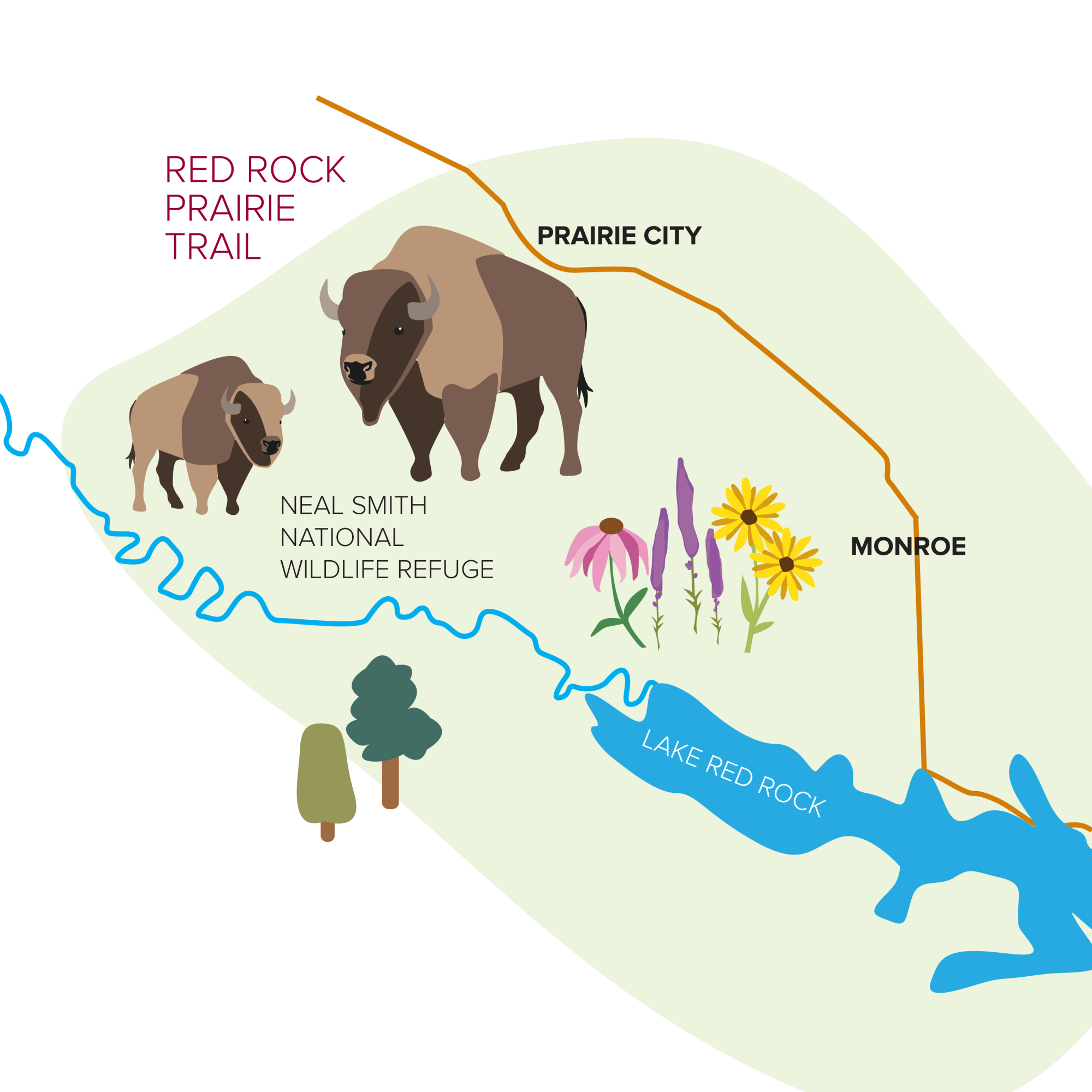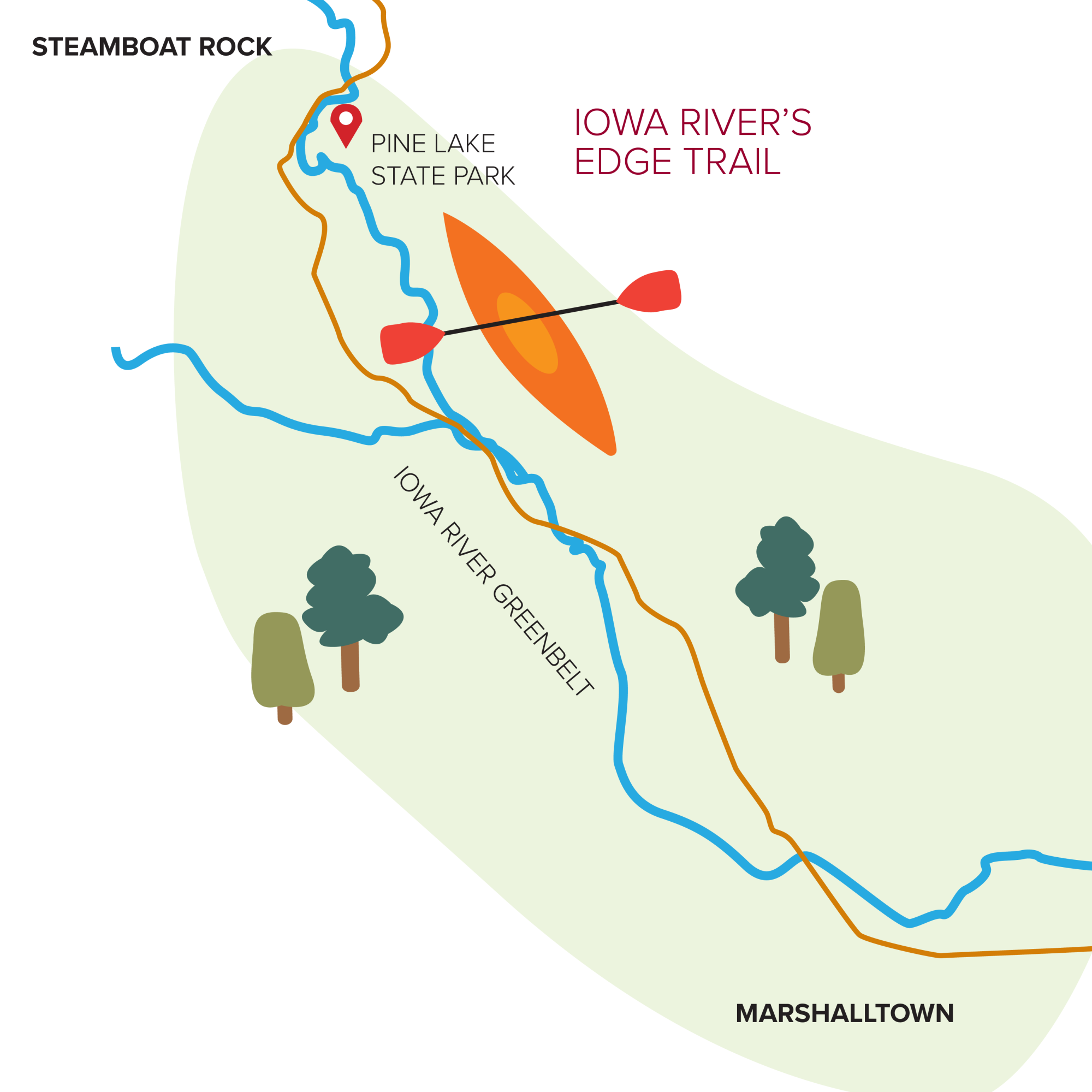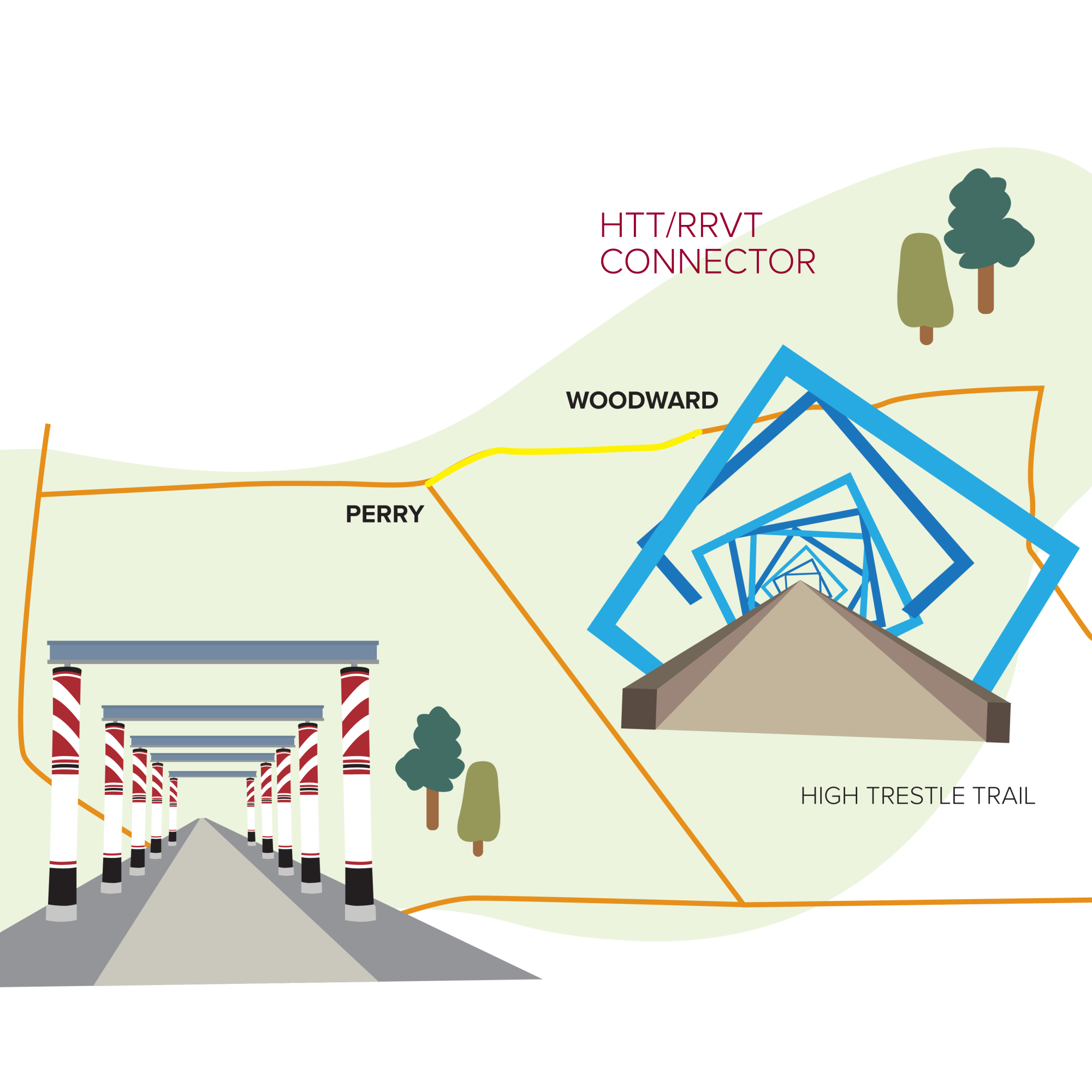Gaining Ground
By Katy Heggen on August 18, 2020 in Blog
Park and trail usage has increased exponentially across the country in recent months as people continue to look for safe spaces to exercise, decompress and connect with nature, and Iowa is no exception.
According to data compiled by Google in its Community Mobility Report released mid-August, natural areas including parks, trails and other outdoor spaces in Iowa are currently experiencing a 231% increase in usage. Trails in particular offer a unique way to get outdoors independently, together.
“Trails give you a feeling of going somewhere,” said INHF Trails and Greenways Director Andrea Boulton. “They also provide a sense of community. That’s so important, especially now.”

Mile-by-mile
As more people explore Iowa by trail, communities across the state are eager to offer them more routes to take, especially in rural areas. But building trails and creating connections between existing trail networks is no small feat. Most trails take years to complete, their course shaped by a number of contributing factors including planning, funding, navigating corridor negotiations, engineering considerations and construction timelines.
Unlike surrounding states, Iowa’s multi-county trails are managed by local rather than statewide agencies. These agencies, which include county conservation boards, municipalities and trail advocates often rely on INHF for technical expertise and statewide perspective.
“The INHF Trails Program’s goal is to provide resources and support among partners to help them actualize their goals. The amount of time it takes to see success on a project can be daunting. We hope to be the friendly face that pushes people forward and help celebrate even the smallest victories,” Boulton said.
Up ahead
On average, INHF is engaged in establishing 5-10 trails statewide at any given time, each in various stages of progress. The Red Rock Prairie Trail, the Iowa River’s Edge Trail and the High Trestle Trail/Raccoon River Valley Trail Connector are among INHF’s current projects. All three are slated to extend existing stretches of trail within the next year, expanding opportunities for Iowans to get outdoors.
Red Rock Prairie Trail
For the past six years, the Jasper County Conservation Board and the cities of Monroe, Prairie City and Mitchellville have been laying the foundation for the Red Rock Prairie Trail, a 16-mile multi-use rail-trail that will wind its way through native prairie and agricultural lands, connecting the three communities.
The project is part of a larger vision that will link the Red Rock Prairie Trail to the Central Iowa Trail Network, creating connections between Saylorville Lake, the Neal Smith National Wildlife Refuge and Lake Red Rock.
Construction on Phase I of the project, a 9-mile stretch from Monroe through Prairie City to Neal Smith National Wildlife Refuge, is tentatively slated to begin next year. It is expected to open fall of 2021.
Land for the corridor included in Phase II, which will connect Prairie City to Mitchellville, has already been purchased, and fundraising for construction is underway. Mitchellville completed a study with the assistance of Snyder and Associates, Inc. to chart the connection between the Red Rock Prairie Trail and the Chichaqua Valley Trail, which would link the community to Altoona.
“The way people have come together has been really tremendous,” said Jasper County Economic Development Executive Director Jeff Davidson. “There may be aspects of the project that appear to benefit one town more than another, but they all support it, because when it comes to the trail what’s good for one town is good for the other. They really understand that this is something they’re doing together. It’s the creation of the entire trail that creates the benefits for everyone.”

Iowa River’s Edge Trail
For eight years, those involved in creation of the Iowa River’s Edge Trail have envisioned a trail that will cultivate a deeper sense of connectivity, community and collective appreciation for the cultural and natural resources along the river corridor in east central Iowa.
Once complete, the 34-mile rail-trail between Steamboat Rock and Marshalltown will connect seven communities, two counties and a variety of local, county, regional and state trails and parks. As it weaves it way back and forth along the river, it will take trail users past scenic bluffs, wetlands and wooded areas home to diverse wildlife.
Three miles of trail have already been paved from the trailhead in Marshalltown, and another mile from the opposite trailhead in Steamboat Rock. Next year, construction commences on the four miles to Eldora. This segment, which is expected to open in fall 2021, will create a ten-mile loop between Eldora, Pine Lake State Park and Steamboat Rock, expanding outdoor recreation opportunities in the area.
“Sometimes it feels like a monumental task, but we keep motivating each other, and it feels like it’s starting to pay off,” said Iowa River’s Edge Trail Committee Member Joe Herring. “Once this next phase is complete, people will be able to have an experience that includes opportunities to camp, bike, paddle, run, walk — all along the trail. It’s not Yellowstone, but it’ll be a local, laidback and awesome little destination for families.”
Seven of the trail’s 19 bridges will also be under construction. The bridges will connect 10 miles of yet-to-be-paved trail, creating safe crossings for hikers, mountain bikers, birders, etc.
The project is currently raising funds to continue construction to extend the trail.

HTT/RRVT Connector
Once complete, the nine-mile Connector Trail between Perry and Woodward will link two of Iowa’s most popular trails, the High Trestle Trail and the Raccoon River Valley Trail.
Traversing five towns and four counties, the 25-mile High Trestle Trail is one of Iowa’s most beloved trails. Completed in 2011, the trail features an iconic half-mile bridge across the Des Moines River. The Raccoon River Valley Trail stretches 89 miles spanning 14 towns and four counties, traversing woodlands, prairies, agricultural and urban landscapes. Phase I of the project, one-and-a-half miles from the east edge of Perry city limits to 130th street, is already complete. Phase II, a one-mile section west of Woodward city limits to R Ave., is slated to open in late summer or early fall of 2020. Phase III, which extends one mile westward from the end of Phase II is slated for completion in 2021. This phase may be combined with a Phase IV segment which extends .5 miles eastward from the end of Phase I, but includes building a bridge across Beaver Creek east of Perry. Funding has been secured for Phases I,II,III,IV but additional funds are needed to complete the 9-mile project.
“This (Connector Trail) project is one of the most significant trail projects in years,” said Dallas County Conservation Board Director Mike Wallace. “It connects two of the most popular trails in central Iowa and creates additional networking opportunities for many other trails.”